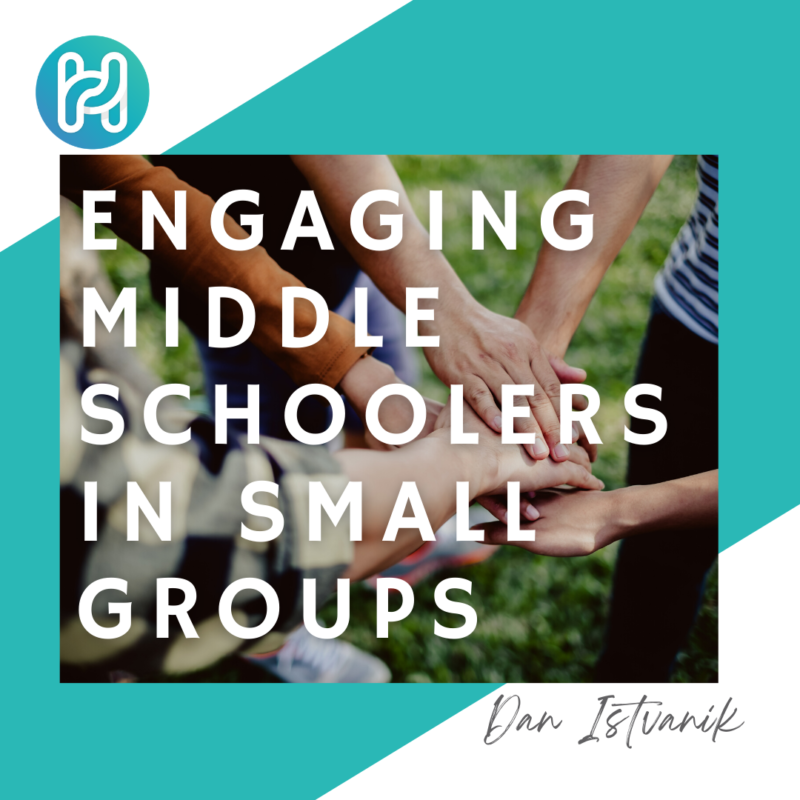Youth Ministry Hints, Youth Ministry Resources, Youth Ministry Thoughts
Engaging Middle Schoolers in Small Groups
ENGAGING MIDDLE SCHOOLERS IN SMALL GROUPS IS SOMETIMES CHALLENGING; OTHER TIMES, IT MAY SEEM IMPOSSIBLE.
She was awkwardly staring me down, like only a middle school girl with a little too much attitude could. We had dismissed into small groups a while ago. I had asked her a simple question, “Why aren’t you in your small group?”
She rolled her eyes, explaining she didn’t want to go to a small group, and I couldn’t make her. I was puzzled. I thought she was in a great small group with outstanding leaders and a cool group of girls in her grade. I realized she had never fully engaged in her small group as we talked. She would go into the bathroom each week instead, waiting out the small group time.
Small groups have become a mainstay element of youth ministry strategies. However, middle school students, like this young girl, may not understand the value of small groups or immediately engage. THREE AREAS will help engage your middle school students (and maybe your high schoolers too) in the things that they benefit from being engaged in small groups.
Positivity.
- Excitement. Students coming into our ministry from the children’s ministry or outside our church should sense the excitement about being part of a small group. Younger students will not automatically be excited about small groups. Our ministry’s opportunity and the challenge is to get students excitedly engaged. Leaders need to lead the enthusiasm about small groups. Engaged, authentic leaders with a positive spirit will create engaged students that look forward to small groups each week.
- Connection. Living in a digitally disconnected world, small groups offer something rare: face-to-face connection. A positive guideline for small group times is “devices off.” Whether meeting on Sunday mornings or mid-week, inside the church building or in a home, amazing things can only happen in small groups when students are allowed to connect genuinely. Students experiencing true conversation engage in something digital experiences cannot offer: real connectivity.
- Faith. Big faith is found in small places in the small circles of small groups. The most positive thing about a small group is walking the journey of faith with others of similar age. Students will be drawn into being in a group that is positive to their faith while living in a world surrounding them with negatives.
Privacy
- Safe. Middle school students living guarded, overprotected lives will willingly engage in a setting with an element of privacy. This age group is transitioning from the protection of childhood into the tween years’ independence and needs to know that a small group environment is a safe place. It is somewhere where they can be open, honest, and find a trusted group.
- Trust. What happens and is said in the small groups stays in a small group, with a few exceptions. Even in the cases of the exceptions, students need to know they have a secure place to share and find the needed help.
- Openness. Getting students to open up in a smaller setting does not happen immediately—plan for the first month of each year to work slowly from small to big things. Planning a small group-focused activity is a great way to move along the process of trust and openness.
- Ongoing. If a small group is a positive, private environment for students, they will engage in big ways during the regular gathering times and throughout the week. Committed leaders going beyond the regular times to follow up when a student is missing and show up in their student’s world will gain ongoing trust.
Parents
- Partnership. When it comes to 5th-9th graders, the most important people in engaging students may be the people not even present: parents. Young students still depend on parents for rides, scheduling, and permission. Just like any other area of ministry, partnering with parents will enable engagement.
- Communication. Clear, intentional interaction with parents, along with students, will build parent support and confidence. Like a teacher with ongoing contact with parents, small group leaders should seek to also be in regular contact. An open line of communication will also equip small group leaders with information about issues or circumstances that will affect students’ engagement.
- Priority. Students’ and families’ lives and schedules are full of things that are marked as a “priority.” If students are going to be able to attend regularly and fully participate in small groups, parents must see it as a positive priority. One of the best ways to see big things happen in small groups is getting parents on board with what small groups are, why they exist, and how they can be a great thing in their children’s lives. This will only happen if small groups are done in spiritual partnerships with parents.




